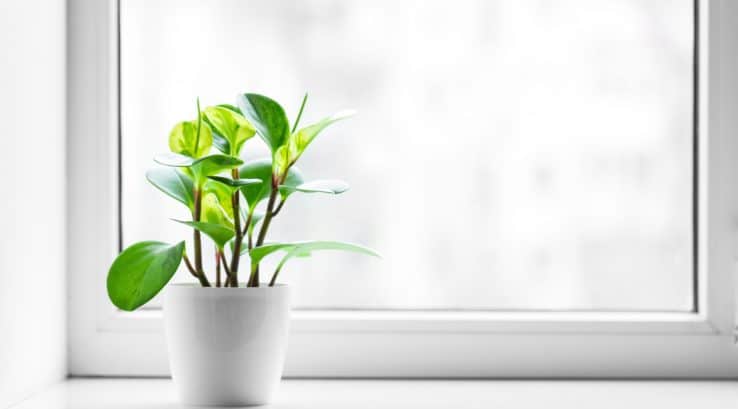Houseplants take more than just sporting a green thumb. Lighting is one of the most important factors for growing houseplants. Here’s a look at how to find the best window for your houseplant to thrive.
Finding the right houseplant means knowing the amount and type of natural lighting you get inside your home. You are better off choosing a plant that works with the indoor conditions of your home than working to make a plant adapt to what you have available.
- Check the direction of the sun as it relates to your windows.
- North-facing windows will offer lower light and therefore the hardiest plants that don’t require much will do well here. Some includes the philodendron, the peace lily and the zz plant
- East or west-facing windows will offer medium light. Plants that will grow under medium light include: African violets, ficus and a variety of orchids.
- South-facing windows usher in the brightest daylight. Plants that flourish with a lot of daylight include dwarf citrus, cacti and succulents.
- Check the duration and intensity of the light coming through your windows.
Light is measured in units called foot-candles. One foot-candle is the amount of light cast by a candle on a white surface one foot away in a totally dark environment. To compare, a bright day outdoors ranges from 10,0000 fc-c in the sun. You can find out how much sun is coming through your window using a handheld light meter or a 35 mm camera.
- Check your window for obstructions that could block sunlight. Your houseplants might not be getting as much natural light as you think if trees or other elements are blocking the window. Overhangs, eaves and porch roofs can also cast shades depending on the time of year.
- Access the right window for your plants depending on the time of year. For example, low winter sun shines across windows with southern exposure for most daylight hours. In the summer, direct light only comes into a south window at midday. Make sure to continually check for light deficit or over-lighting that may be scorching plants.
- Check your window for a draft. Extreme cold or hot air blasts can kill houseplants. Displaying plants on the sill of an ill-fitting window can expose plants to damaging drafts. If you notice your plant is wilting or leaves that turn brown overnight, it could be your windows are drafty and need to be repaired or replaced.
Which Window is Best for Plants?
While most windows with a deep sill can support a plant, houseplants are often placed on plant stands or nearby shelves to catch natural daylight. Plants can have their own dedicated space with the installation of a garden window. Garden windows add dimension and light as well as shelf-space making them the best spot for houseplants and even an herb garden.
The experts at Thompson Creek can walk you through your garden window project. Call us today for a free, no-obligation estimate.


